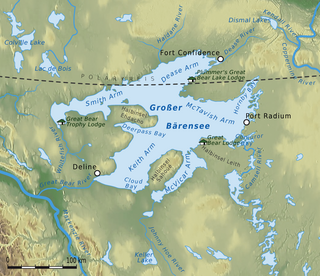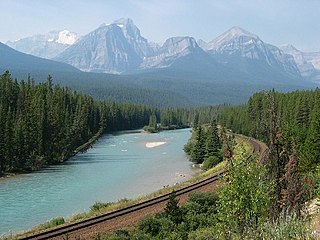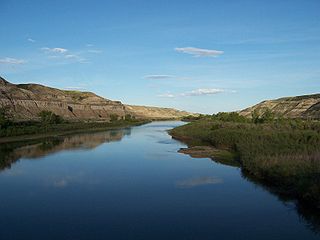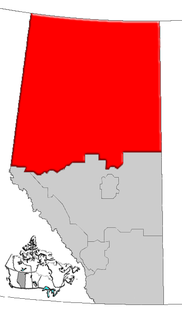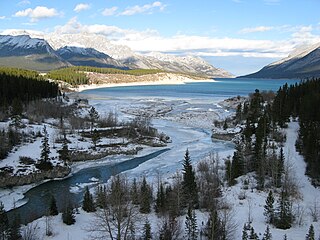| Cascade River | |
|---|---|
The Cascade River in Stewart Canyon | |
| Country | |
| Physical characteristics | |
| Main source | Bonnet Glacier/Badger Pass 2,174 m (7,133 ft) 51°25′29″N115°50′28″W / 51.42472°N 115.84111°W |
| River mouth | Bow River 1,361 m (4,465 ft) 51°09′59″N115°28′43″W / 51.16639°N 115.47861°W Coordinates: 51°09′59″N115°28′43″W / 51.16639°N 115.47861°W |
| Basin features | |
| Waterbodies | Lake Minnewanka |
The Cascade River is a medium-sized river in southwestern Alberta, Canada. It originates in the Canadian Rockies, flows through Lake Minnewanka, and in turn, joins the Bow River.

Alberta is a western province of Canada. With an estimated population of 4,067,175 as of 2016 census, it is Canada's fourth most populous province and the most populous of Canada's three prairie provinces. Its area is about 660,000 square kilometres (250,000 sq mi). Alberta and its neighbour Saskatchewan were districts of the Northwest Territories until they were established as provinces on September 1, 1905. The premier has been Rachel Notley since May 2015.

Canada is a country in the northern part of North America. Its ten provinces and three territories extend from the Atlantic to the Pacific and northward into the Arctic Ocean, covering 9.98 million square kilometres, making it the world's second-largest country by total area. Canada's southern border with the United States is the world's longest bi-national land border. Its capital is Ottawa, and its three largest metropolitan areas are Toronto, Montreal, and Vancouver. As a whole, Canada is sparsely populated, the majority of its land area being dominated by forest and tundra. Consequently, its population is highly urbanized, with over 80 percent of its inhabitants concentrated in large and medium-sized cities, many near the southern border. Canada's climate varies widely across its vast area, ranging from arctic weather in the north, to hot summers in the southern regions, with four distinct seasons.

The Canadian Rockies or Canadian Rocky Mountains comprise the Canadian segment of the North American Rocky Mountains. They are the eastern part of the Canadian Cordillera, which is a system of multiple ranges of mountains which runs from the Canadian Prairies to the Pacific Coast. The Canadian Rockies mountain system comprises the southeastern part of this system, lying between the Interior Plains of Alberta and Northeastern British Columbia on the east to the Rocky Mountain Trench of BC on the west. The southern end borders Idaho and Montana of the United States. In geographic terms the boundary is at the Canada/US border, but in geological terms it might be considered to be at Marias Pass in northern Montana. The northern end is at the Liard River in northern British Columbia.
The Cascade River is formed from the glacial melt of Flints and Bonnet Peaks, as well as Block Mountain. Glacial lakes that drain into the Cascade include Goat Lake, Sawback Lake, Elk Lake, and Cuthead Lake. The river also takes on Stoney Creek before entering the dramatic Stewart Canyon, then draining into Lake Minnewanka.
The Cascade River is named after Cascade Mountain. The mountain was named by Sir James Hector, who took the native name which meant "mountain where the water falls" and abbreviated the term to Cascade. [1]
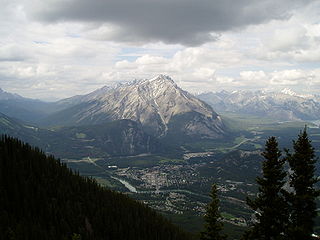
Cascade Mountain is a mountain located in the Bow River Valley of Banff National Park, adjacent to the town of Banff. The mountain was named in 1858 by James Hector after the waterfall or cascade on the southern flanks of the peak. The mountain has also been called Stoney Chief, which is related to the name of the smaller neighbouring mountain Stoney Squaw, which is still in use. Cascade is the highest mountain adjacent to the townsite.



